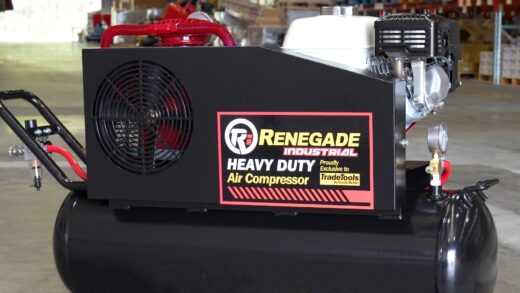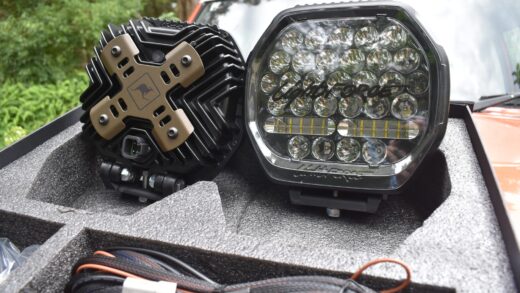The Essential Guide to Wheelie Bin Lifters: Enhancing Safety and Efficiency in Waste Management
In the realm of waste management, the safe and efficient handling of wheelie bins is a critical concern for businesses, organizations, and even residential settings. Wheelie bin lifters, also known as bin tippers or bin hoists, are innovative devices designed to simplify the process of lifting and emptying heavy bins. These machines not only improve operational efficiency but also play a significant role in reducing the risk of injury among workers tasked with handling waste.
Let’s discuss the benefits of wheelie bin lifters, their various types, and key considerations when choosing the right one for your needs.
Contents
The Importance of Wheelie Bin Lifters
Wheelie bins, commonly used for waste collection, can become extremely heavy, especially when filled with wet or dense materials. Manually lifting and emptying these bins can lead to a host of issues, including back injuries, muscle strains, and other physical ailments. These injuries are not only painful and potentially debilitating but can also result in significant downtime and costs for businesses due to lost productivity and compensation claims.
Wheelie bin lifters address these challenges by providing a mechanical solution that reduces or eliminates the need for manual handling. By automating the lifting and tipping process, these devices help ensure that waste management tasks are carried out more safely and efficiently. They are particularly valuable in environments where large volumes of waste are generated, such as in industrial settings, hospitality venues, and large residential complexes.
Benefits of Using Wheelie Bin Lifters

Wheelie bin lifters offer a range of benefits that make them an essential tool in modern waste management practices. Some of the key advantages include:
1. Improved Safety
The primary benefit of using a wheelie bin lifter is the significant improvement in safety for workers. Manual lifting of heavy bins poses a high risk of injury, particularly to the back, shoulders, and wrists. Wheelie bin lifters reduce this risk by taking on the heavy lifting, allowing workers to operate the machinery with minimal physical exertion. This leads to a safer working environment and reduces the likelihood of accidents and injuries.
2. Enhanced Efficiency
In addition to improving safety, wheelie bin lifters greatly enhance the efficiency of waste handling operations. These devices allow bins to be emptied quickly and with minimal effort, which can lead to faster turnaround times and increased productivity. This efficiency is particularly important in settings where time is of the essence, such as in commercial kitchens, industrial plants, and waste management facilities.
3. Cost Savings
While there is an initial investment associated with purchasing a wheelie bin lifter, the long-term cost savings can be substantial. By reducing the risk of injury, businesses can lower their workers’ compensation claims and minimize absenteeism due to injury-related downtime. Additionally, the increased efficiency provided by these devices can lead to lower labor costs and reduced operational expenses.
4. Versatility
Wheelie bin lifters are versatile machines that can be used in a variety of settings. They are compatible with different sizes and types of bins, making them suitable for diverse waste management needs. Whether you’re dealing with standard 240-liter wheelie bins or larger commercial bins, there’s likely a lifter designed to handle the load.
5. Ergonomic Design
Many wheelie bin lifters are designed with ergonomics in mind, allowing operators to control the machine with ease. Features such as adjustable heights, simple controls, and smooth lifting mechanisms make these devices user-friendly, further reducing the strain on workers.
Types of Wheelie Bin Lifters

Wheelie bin lifters come in various designs, each tailored to specific operational needs. Understanding the different types can help you select the right one for your application.
1. Manual Bin Lifters
Manual bin lifters are the most basic type and require the operator to use a crank or lever to lift the bin. While they still reduce the physical strain compared to lifting by hand, they require more effort than powered options. These lifters are generally more affordable and are suitable for environments with lower volumes of waste.
2. Hydraulic Bin Lifters
Hydraulic bin lifters use hydraulic power to lift and tip bins. These machines are highly efficient and can handle heavier loads with minimal operator effort. Hydraulic lifters are ideal for industrial settings or businesses that generate large amounts of waste, as they offer a balance of power and ease of use.
3. Electric Bin Lifters
Electric bin lifters are powered by electricity and offer the most convenient and effortless operation. With just the push of a button, these machines can lift and tip bins with precision and consistency. Electric lifters are perfect for settings where speed and efficiency are critical, such as in waste management facilities or large commercial environments.
4. Mobile Bin Lifters
Mobile bin lifters are designed to be easily moved from one location to another. They are typically equipped with wheels and can be used across multiple sites, making them a versatile choice for businesses that need flexibility in their waste handling processes. Mobile lifters can be either manual, hydraulic, or electric, depending on the specific model.
5. Stationary Bin Lifters
Stationary bin lifters are fixed in one location and are often integrated into waste management systems or production lines. These lifters are suitable for businesses with a consistent and high-volume waste output, where bins are frequently emptied in the same location. Stationary lifters are usually more robust and capable of handling larger bins and heavier loads.
Choosing the Right Wheelie Bin Lifter
Selecting the appropriate wheelie bin lifter involves considering several factors to ensure it meets your specific needs. Here are some key considerations:
1. Bin Compatibility
Ensure that the lifter you choose is compatible with the size and type of bins you use. Some lifters are adjustable and can accommodate various bin sizes, while others are designed for specific bin dimensions.
2. Load Capacity
Consider the weight of the waste you typically handle and choose a lifter with an appropriate load capacity. Overloading a lifter can cause damage to the equipment and pose safety risks, so it’s important to select a model that can comfortably handle your heaviest bins.
3. Operation Type
Decide whether a manual, hydraulic, or electric lifter is best suited to your needs. Manual lifters are more affordable but require more physical effort, while hydraulic and electric lifters offer greater ease of use and efficiency.
4. Environment
Consider the environment in which the lifter will be used. For example, if you need to move the lifter between different locations, a mobile model would be ideal. In contrast, if the lifter will be used in a fixed location, a stationary model may be more appropriate.
5. Safety Features
Look for lifters with built-in safety features such as locking mechanisms, overload protection, and emergency stop functions. These features help ensure safe operation and reduce the risk of accidents.
Conclusion
Wheelie bin lifters are indispensable tools for modern waste management, offering significant benefits in terms of safety, efficiency, and cost savings. By automating the lifting and tipping process, these devices help protect workers from injury while streamlining waste handling operations. Whether you’re managing waste in an industrial setting, a commercial kitchen, or a residential complex, investing in the right wheelie bin lifter can make a substantial difference in your overall productivity and safety.

















